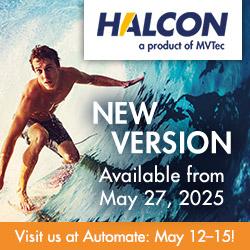Kepler K2 "Bumblebee" Debuts at ICRA 2025, Captivating Attendees
As the humanoid category moves into early-stage mass production, robots must demonstrate high payload capacity, endurance, and cost-efficiency to achieve sustainable deployment.
During the IEEE International Conference on Robotics and Automation 2025 (ICRA 2025) held in Atlanta from May 19 to 23, Shanghai Kepler Robotics Co., Ltd ("Kepler Humanoid Robot") introduced its latest industrial-grade humanoid robot, the K2 "Bumblebee," drawing global attention with a live demonstration of its real-world operational capabilities. The event brought together leading researchers, executives, and engineers from across the robotics ecosystem.
Notable visitors to the Kepler Humanoid Robot booth included Jim Fan, Senior Research Scientist at NVIDIA, and Hesheng Wang, General Chair of the International Conference on Intelligent Robots and Systems (IROS), among other robotics experts. They engaged in discussions on the trajectory of humanoid robotics and the path to scalable deployment in industrial environments.
Kepler's booth quickly became a high-traffic destination at ICRA 2025. The K2 "Bumblebee" greeted attendees with natural gestures, navigated the venue with steady, autonomous mobility, and interacted fluidly with other robotic systems. Its engaging presence prompted a flurry of photos and videos, with many attendees lining up to pose with the robot.
Debo Hu, CEO of Kepler Humanoid Robot, stated, "The next major focus for the humanoid robot sector is achieving a complete commercial value loop, and industrial environments present the clearest path to near-term deployment. Our fifth-generation humanoid robots are now in limited-series production, with industrial use cases as our initial focus. Our latest round of funding reinforces our confidence in the commercial viability of our platform."
Kepler Humanoid Robot is dedicated to developing industry-leading blue-collar humanoid systems. Purpose-built for industrial settings, the K2 "Bumblebee," stands 175 cm tall, weighs 75 kg , and features 52 degrees of freedom and more than 80 integrated sensors. Its onboard compute reaches 100 TOPS, enabling it to autonomously execute task sequences in structured operational environments.
As the humanoid category moves into early-stage mass production, robots must demonstrate high payload capacity, endurance, and cost-efficiency to achieve sustainable deployment.
The K2 "Bumblebee" features Kepler's proprietary planetary roller screw actuators, engineered for smooth motion control and reduced energy draw. With near-zero static power consumption, the robot offers extended uptime. Combined with its innovative series-parallel architecture and advanced actuation system, the K2 supports payloads of 15 kg per arm and up to 30 kg with both arms. The robot delivers up to 8 hours of operational time on a single 1-hour charge. Additionally, its proprietary rotary actuators enable millimeter-level precision for fine motor tasks.
In addition, the Kepler K2 "Bumblebee" also includes Kepler's proprietary Dexterous Hands, each featuring 11 degrees of freedom, 25 force-sensing contact points per finger, and a 6-axis force/torque sensor at the wrist. These capabilities allow for advanced manipulation tasks across a range of industrial applications.
Kepler reports that over 80% of the robot's core hardware is developed and manufactured in-house—supporting vertical integration, reducing costs, and improving supply chain resilience. The base model of the K2 "Bumblebee" is priced at $30,000 and can perform the equivalent workload of approximately 1.5 full-time human workers in comparable timeframes.
Deployment flexibility is a key enabler for humanoid adoption. According to Goldman Sachs, humanoid robots are expected to begin integration into manufacturing environments between 2024 and 2027. Kepler is targeting intelligent manufacturing, warehousing and logistics, niche industries, academic research, and education as its primary markets. The company's commercialization roadmap prioritizes penetration of specific verticals before expanding into general-purpose use cases.
K2 "Bumblebee" units are currently being trialed across a range of real-world industrial scenarios. Kepler continues to expand its partnerships throughout the robotics value chain to accelerate the transition from prototyping to commercial-scale deployment.
Featured Product

